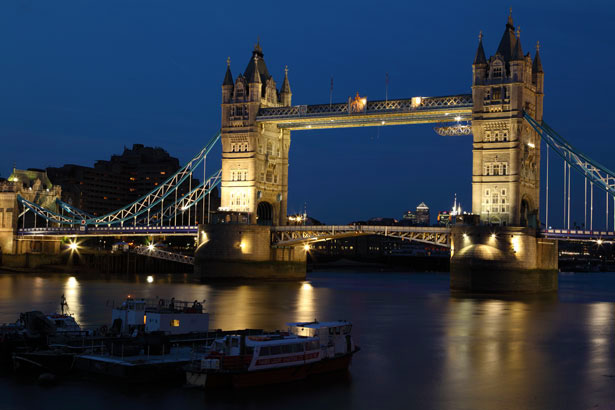Many bridges are well lit at night and consequently make excellent low-light architectural subjects. Indeed, some structures make better subjects at night than during the day. They have more colour, and the surrounding environment may be less prominent or beautifully lit to enhance the composition. The so-called blue hour, which follows sunset, is often a good time for low-light work of this type.
Use a tripod and a remote release to prevent any camera movements, and be prepared to select a long exposure period. Take the exposure setting, using spot metering, from an illuminated area of the subject and bracket a one or two stops on either side. Shooting in RAW mode allows for maximum adjustment at a later stage. A typical exposure might be in the range 15 - 30 seconds at f/16 when using ISO 100.
Since most bridges span water, try to find a location where the floodlit areas of the structure, and the surrounding lights, are reflected in the water's surface. This adds a whole new element to a composition. Also try to find some sort of foreground to give images depth and place the bridge in the context of its surroundings.
Since many bridges are in urban areas, care should be exercised when setting up a camera and a tripod. Other people cannot see as clearly as they might during daylight hours and accidents happen all too easily. It is also sensible to work with someone else for reasons of personal security. Expensive equipment remaining in a particular location for an extended period makes an obvious target for thieves.







